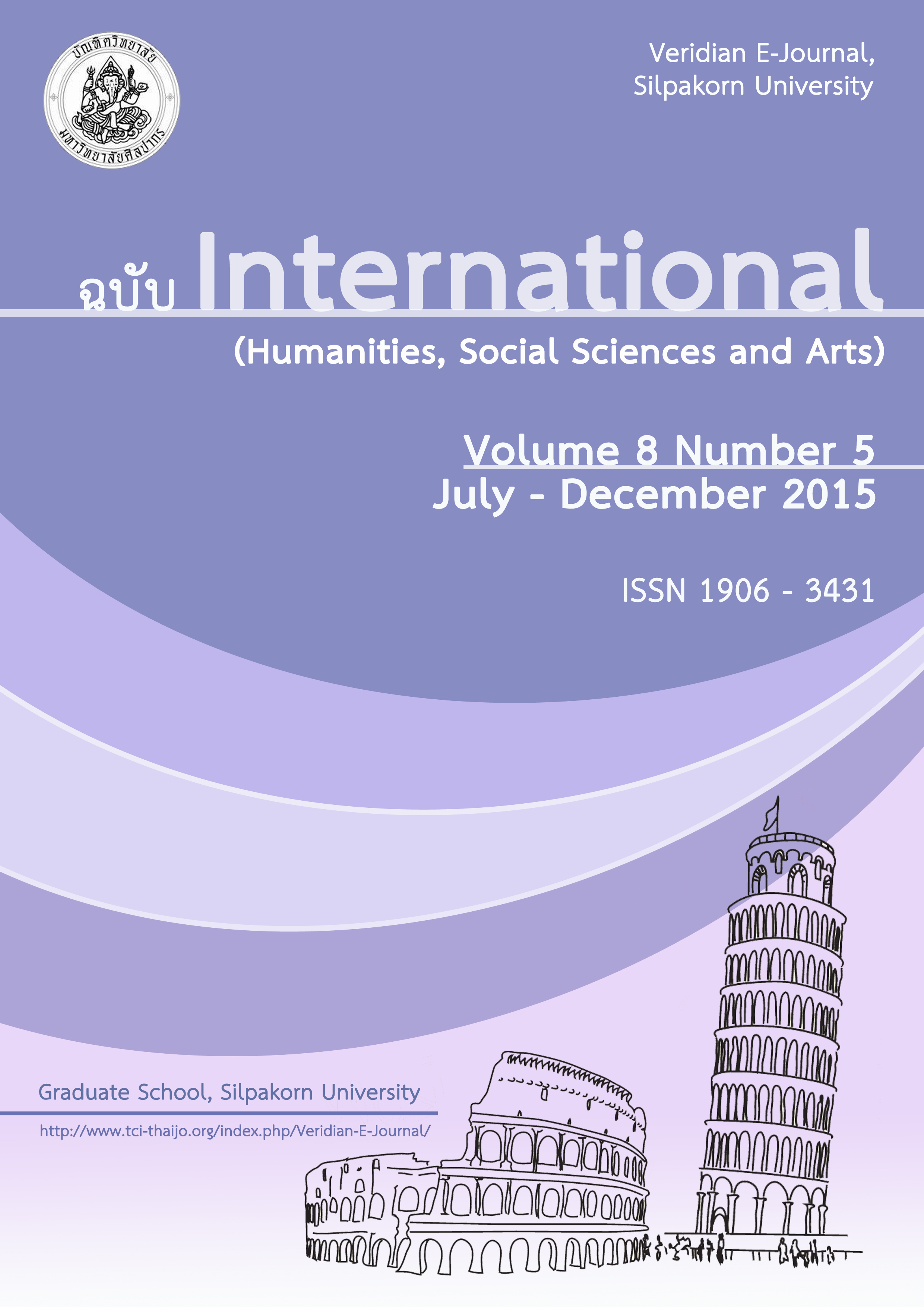Thai L1 Use by Thai Teachers in Upper Secondary EFL Classrooms
Main Article Content
Abstract
Abstract
This study aimed 1) to study the purposes, quantity, and frequency of Thai L1 use by Thai EFL teachers in the EFL classroom, and 2) to compare the purposes, quantity, and frequency of Thai L1 use by Thai EFL teachers in EFL classrooms of the three programs. The population consisted of all the 81 English teachers and 7,731 students from seven extra-large government secondary schools under The Secondary Educational Service Area Office 16, covering Satun and Songkla Provinces. Subjects comprised 68 Thai teachers teaching English to upper secondary students, and 364 students studying in Science-Math, English-Math, and English-Chinese Programs. The Krejcie and Morgan sampling technique, and the quota sampling technique were employed to specify the number of students’ participants from each school. A questionnaire and semi-structured interview were employed in data collection. It was found that the teachers (95.51%) used Thai language in EFL classrooms at the frequent level ( = 3.51, S.D. = 0.63). The first three purposes found to be used most frequently were: explaining English grammar ( =4.03, S.D. = 0.87), lessening anxiety ( =3.62, S.D. = 0.79), providing schematic knowledge ( =3.62, S.D. = 0.65), respectively. It was also found that the amount of Thai L1 used with students of the three programs was significantly different (F=12.74, p<0.01).
บทคัดย่อ
การวิจัยครั้งนี้มีวัตถุประสงค์ 1) เพื่อศึกษาจุดประสงค์ ปริมาณ และความถี่ของการใช้ภาษาไทยโดยครูไทยในชั้นเรียนภาษาอังกฤษเป็นภาษาต่างประเทศ และ 2) เพื่อเปรียบเทียบจุดประสงค์ ปริมาณ และความถี่ของการใช้ภาษาไทยโดยครูไทยในชั้นเรียนภาษาอังกฤษเป็นภาษาต่างประเทศกับนักเรียน 3 แผนการเรียน ประชากรประกอบด้วยครูสอนภาษาอังกฤษทั้งหมด 81 คนและนักเรียนทั้งหมด 7,731 คน จากโรงเรียนมัธยมของรัฐขนาดใหญ่พิเศษ จำนวน 7 โรงเรียน สังกัดสำนักงานเขตพื้นที่การศึกษามัธยมศึกษาเขต16 ซึ่งครอบคลุมจังหวัดสตูลและสงขลา กลุ่มตัวอย่างประกอบด้วยครูไทยที่สอนภาษาอังกฤษในระดับมัธยมปลาย จำนวน 68 คนและนักเรียนจำนวน 364 คนที่ศึกษาแผนการเรียนวิทย์-คณิต อังกฤษ-คณิต และอังกฤษ-จีน ใช้เทคนิคของตารางเคร์ซี่และมอร์แกนและการสุ่มตัวอย่างแบบโควตากำหนดสัดส่วนกลุ่มตัวอย่างนักเรียนจากแต่ละโรงเรียน ใช้แบบสอบถามและการสัมภาษณ์แบบกึ่งโครงสร้างในการเก็บข้อมูล ผลการวิจัยพบว่า ครู (ร้อยละ 95.51) มีปริมาณการใช้ภาษาไทยในชั้นเรียนภาษาอังกฤษอยู่ในระดับบ่อย ( = 3.51, S.D. = 0.63) จุดประสงค์ที่ใช้ภาษาไทยบ่อยที่สุดสามลำดับแรกคือ เพื่ออธิบายไวยากรณ์ภาษาอังกฤษ ( = 4.03, S.D. = 0.87), เพื่อลดความวิตกกังวล ( =3.62, S.D. = 0.79) และเพื่อเชื่อมโยงความรู้ ( =3.62, S.D. = 0.65) ตามลำดับ นอกจากนี้ พบว่ามีปริมาณการใช้ภาษาไทยกับนักเรียน3แผนการเรียนแตกต่างอย่างมีนัยสำคัญทางสถิติ (F=12.74, p<0.01)

